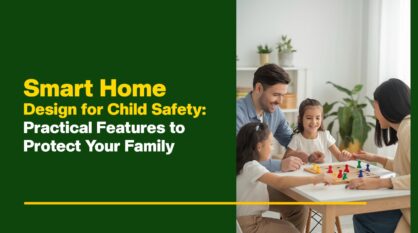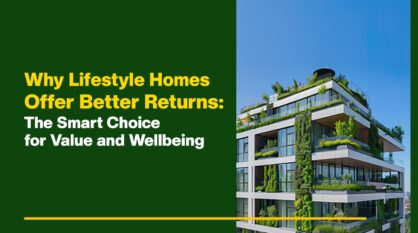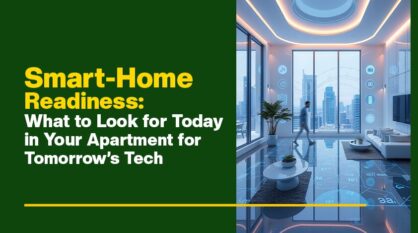Game Time Begins at Home: Why Sports Spaces Are Shaping the Way We Live

In neighbourhoods with actual sporting facilities, something fascinating occurs every evening as the lights turn on throughout apartment buildings. People come out of their houses to play, not to stream or scroll. On the squash court, a couple gives a rally. Under floodlights, teenagers dribble a basketball. A father and his kid play badminton together, laughing at each other’s mistakes. “Next game?” a neighbour shouts from somewhere.
These are not insignificant moments. They change how people live, how they connect, and how they stay healthy. And the apartments that accommodate this kind of life are quietly redefining what it means to live well.
Why Sports Belong at Home
It may seem like a luxury to have a squash court in an apartment block. Until it becomes a way for you to unwind after work. Or your excuse to remain active without ever boarding a vehicle. Or perhaps the location of your child’s first actual sporting activity.
In contrast to casual gyms or strolling routes, courts designed for particular games convey purpose. “This space is not just about aesthetics,” they say. It’s for actual play, practice, and movement. Indoor courts provide a unique edge. They’re compact but intense. The weather cannot get in the way. What about the walls? They challenge your reflexes and demand your full attention. It’s quick, immersive, and it gets addictive in the best possible way.
Kids Need More Than Screens
Children grow up indoors in the majority of cities—school, tuition, screens, and sleep. The outcome? No sport, little sunlight, and low stamina. However, when courts are a part of their community, something changes. Play reappears as a regular activity rather than a weekly excursion.
Children who live in homes with real sports facilities don’t need to be pushed into activity. It finds them. They acquire abilities early on and learn how to compete, lose, and improve. They have calmer brains and stronger bodies as they get older. It’s not just the children, either. Young individuals who don’t have gym memberships use the courts to stay in shape. Retired residents use them to stay mobile.
From Routine to Ritual
In many residential developments, sports courts are included in the amenity list but often fall short in functionality and engagement. Poor lighting, inconvenient locations, and a lack of planned programming reduce these spaces to underutilized areas. Without thoughtful design and regular use, their presence adds little value to the community.
However, when these spaces are planned with intention, they become active, meaningful parts of everyday life. Proper lighting, easy access from key blocks, safe flooring, ventilation, and dedicated storage for equipment are essential features. These details influence not just usability, but also how often residents return to use the space.
Courts that are seamlessly integrated into the layout of a project and maintained regularly tend to foster greater participation. When residents see these areas as a natural extension of their home environment, playing becomes part of their routine. What begins as an occasional evening game can turn into a regular habit. Over time, weekends begin to revolve around matches. Social events revolve around sports activities. Neighbours form teams, competitive games emerge, and a sense of community strengthens.
This shift from passive to active spaces does more than promote physical activity. It encourages interaction, builds familiarity among residents, and supports healthier, more connected living environments. Sports infrastructure, when well-executed, serves both functional and social purposes, turning everyday recreation into a meaningful part of life within the apartment community.
Veegaland’s Approach
These concepts have been subtly incorporated into Veegaland Homes’ projects. Their homes are not only made for families to live in, but to live life to the fullest. Courts aren’t ornamental—they’re placed with purpose. All year long, they are playable due to adequate ventilation, clearance, and maintenance procedures.
Beyond the amenities, however, what matters is how these areas integrate with the daily routines of the inhabitants.
Home designs that facilitate mobility, play, and sports are becoming essential in a time when people are trying to make better decisions about their lifestyles as well as their diet. A better way of living is what they represent. Building for that life is Veegaland Homes’ subtle but deliberate approach—always.
Recent Blog

Kerala Retirement Investment: Why NRIs Choose Peace and Comfort Now
Retiring in Kerala feels like switching to a peaceful rhythm after years of busy city life. Imagine mornings greeted by green views instead of high-rise walls, waking to the sound of birds, breathing fresh air, and ... Read More

Smart Home Design for Child Safety: Practical Features to Protect Your Family
Creating a safe environment for children is a top priority in every home. By blending practical design with smart technology, today’s living spaces reduce risks and support family wellbeing. At Veegaland Homes, ad... Read More

Why Lifestyle Homes Offer Better Returns: The Smart Choice for Value and Wellbeing
A home today is more than just a place to live; It’s a reflection of the way we aspire to live. That’s the idea behind Lifestyle Homes — spaces designed to bring together comfort, convenience, and experiences ... Read More

Smart-Home Readiness: What to Look for Today in Your Apartment for Tomorrow’s Tech
You'll benefit from planning ahead when choosing an apartment in 2025. Smart-home preparation is more crucial than ever since technology changes so quickly. Smart apartments can make life easier, save you time and m... Read More

